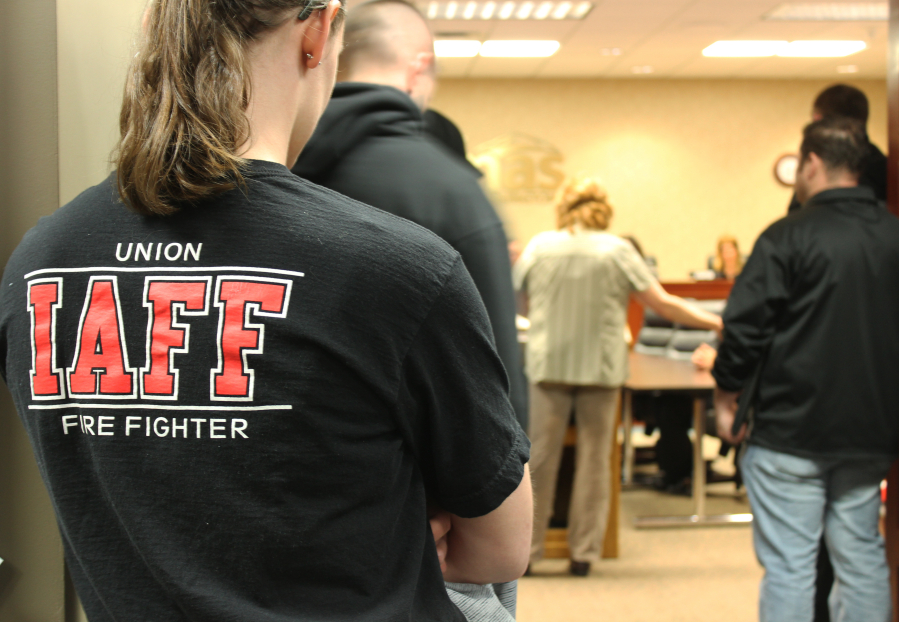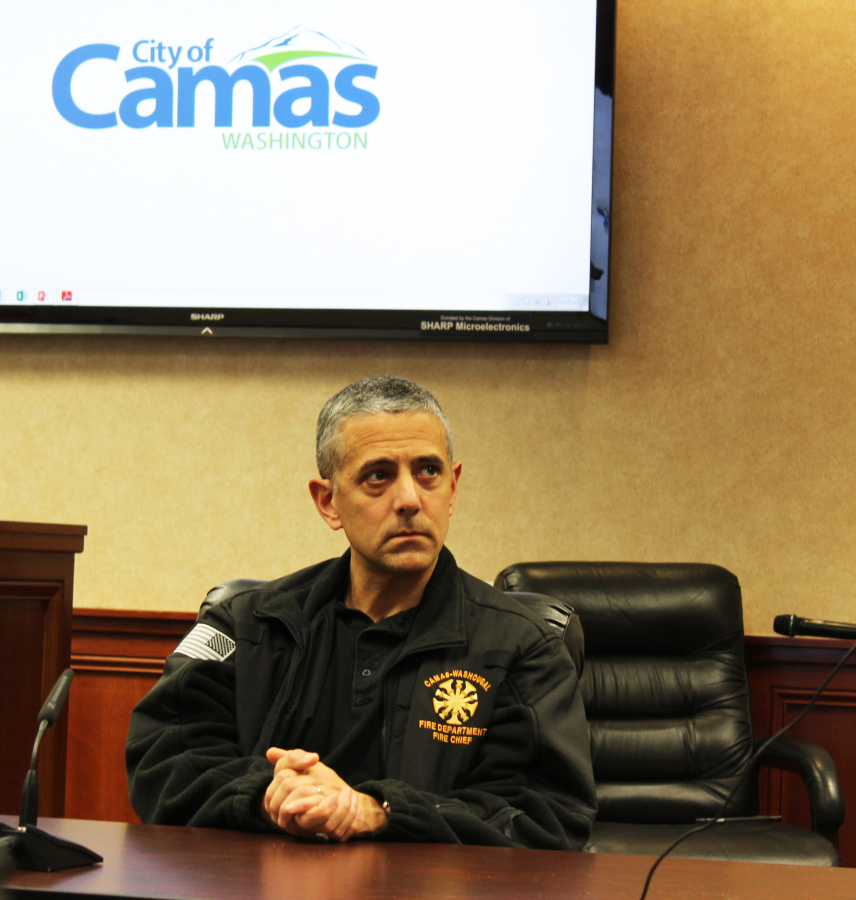Having spent the past few city council meetings hearing from dozens of local firefighters upset over what they feel is a severely understaffed fire department, city leaders in Camas this week learned the costs of increasing staffing levels for the Camas-Washougal Fire Department.
“While there are no federal or state laws that specify minimum staffing levels on engines, there are state (labor and industry) codes that reference minimum levels of staffing to perform certain tasks at an emergency scene,” Swinhart said Monday, at the council’s April 16 work session. “There are provisions in labor contract language that mandates a minimum staffing level of 11 per shift, but it does not address numbers of personnel on each unit.”
The Camas-Washougal Fire Department (CWFD) currently has 48 “front line” responders, and, according to Swinhart, typically operates with two people on an engine with two-person medic units responding to the same fire.
“This usually suffices,” Swinhart told the city councilors and Camas Mayor Scott Higgins Monday evening. “However, if a medic unit is already on another call, the first arriving engine may only have two personnel.”
That was the case on Feb. 14, when CWFD responders took a call for a house fire generated by a home alarm system. Although Swinhart has said the vast majority of alarm-generated calls are false alarms, the Valentine’s Day fire at a Camas residence turned out to be much more dire. When the two-person engine arrived at the scene, the firefighters quickly realized that, not only was the fire real, but a man was trapped in an attached garage and in need of immediate rescue.



